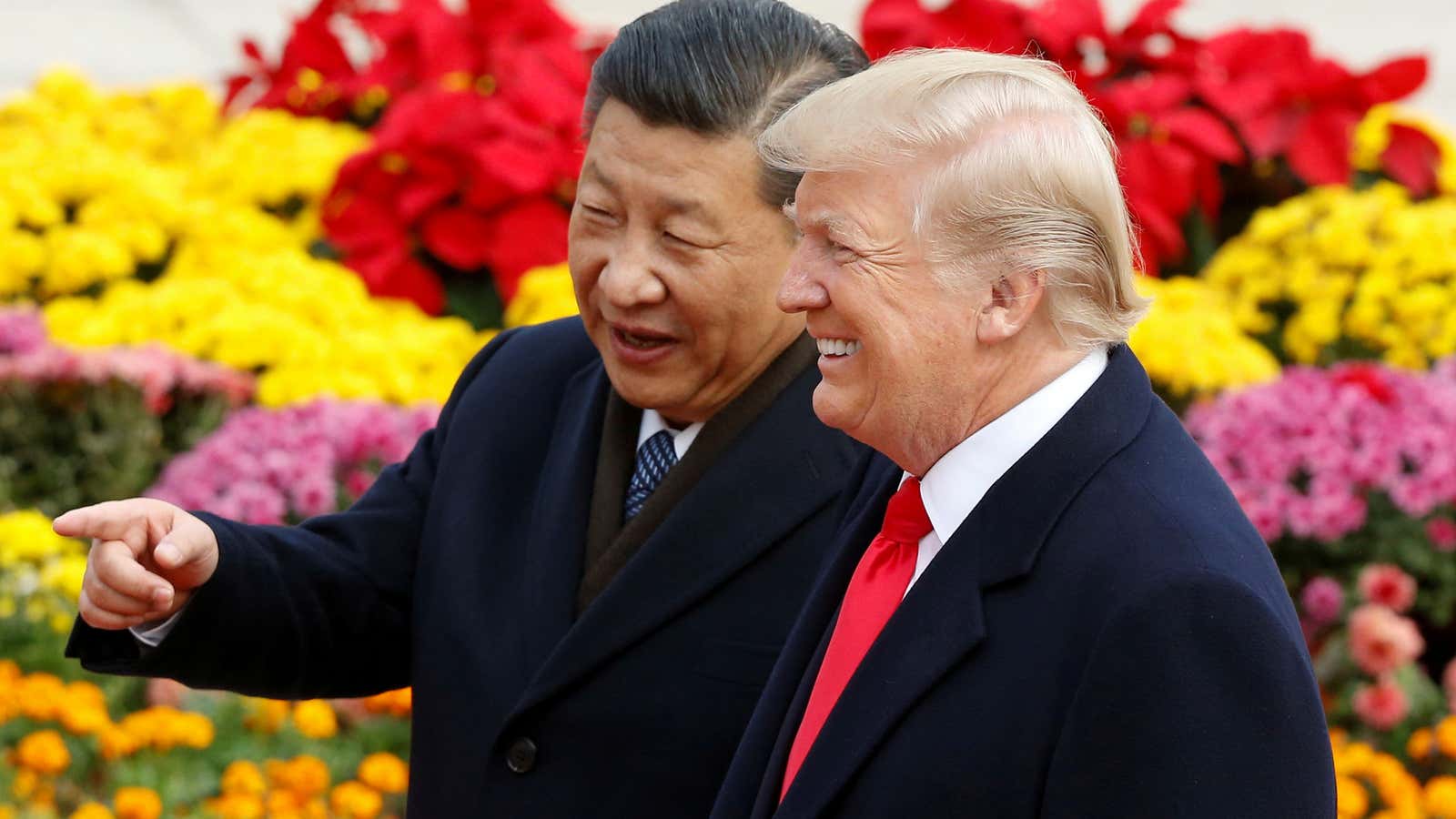After years of battling the US trade deficit, Donald Trump is suddenly pushing for peace. His administration’s updated accord with Canada and Mexico is poised to replace what Trump once called the “worst trade deal ever made.” And the White House says it will ink a “phase one” trade deal with China within the next couple weeks.
But though this might look like the dawn of detente, it’s almost certainly a false one.
The most sobering omen is Trump’s go-to indicator of unfair trade, the imbalance of goods imports over exports. After nearly two full years of trade warring, the deficit hasn’t budged.
Over the last 12 months, the total deficit has risen slightly to $871 billion, and is now more than 18% higher than in 2016, according to analysis by Panjiva, the trade intelligence research arm of S&P Global.
To be fair, the US trade imbalance with China has shrunk, falling more than 10% in the 12 months that ended in Oct. 2019, compared with the same period a year earlier, according to Panjiva. But noisy data make it hard to detect the impact of US policies. For instance, throughout 2018 and early 2019, companies in both the US and China were “frontloading,” stocking up their inventories before tariffs went into effect. Compared with the 12-month period before the trade war began, US purchases from China dropped by a mere 2%—while Chinese imports of American products have plunged 22%.
In other words, there’s no discernible rebalancing of US-China trade. Looking at sectors instead of bilateral trade shows similar patterns. For example, despite nearly two years of tariffs, Americans continue to buy more and more high-tech goods from abroad.
Advanced manufacturing is crucial to creating well-paying jobs and driving long-term growth. The sector’s chronic deficit, therefore, reflects a long-term erosion of American competitiveness and, as a result, high-quality jobs.
By allaying the uncertainty that has hit business investment, removing tariffs could help a little. However, the chronic nature of American deficits—in periods of both relatively free trade and the Trump era of protectionism—suggests imbalances in the US’s relationship with the global economy that are rooted more deeply than trade policy alone. (For starters, the openness of US capital markets to foreign savings leaves the US dollar persistently overvalued and American exports, therefore, less competitive than they should be.)
But tariffs are far easier to impose than reforming the global economy’s structure. So while the imminent signing of the updated North American trade pact and a US-China deal might usher in a period of “trade peace,” conflict is still on the horizon.
